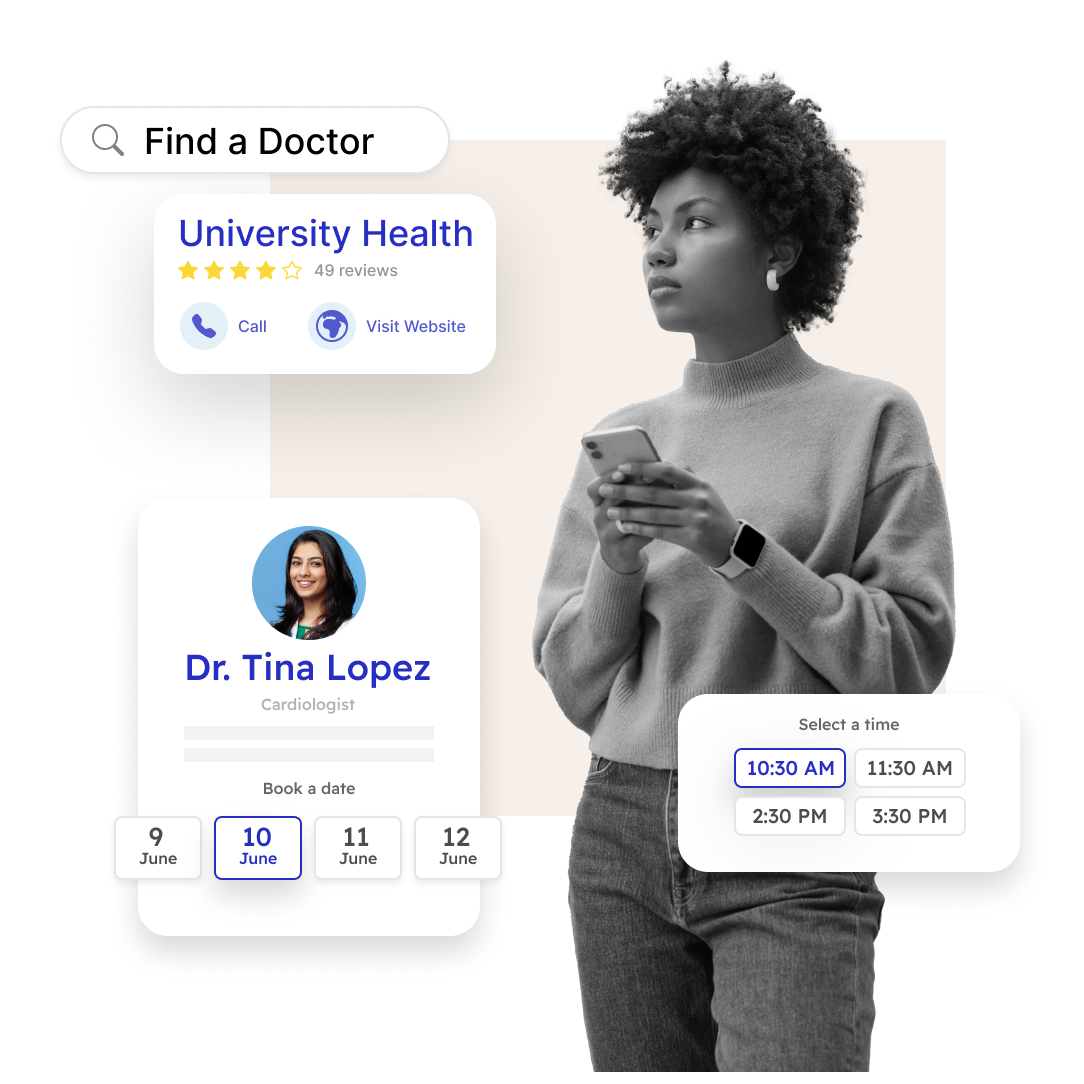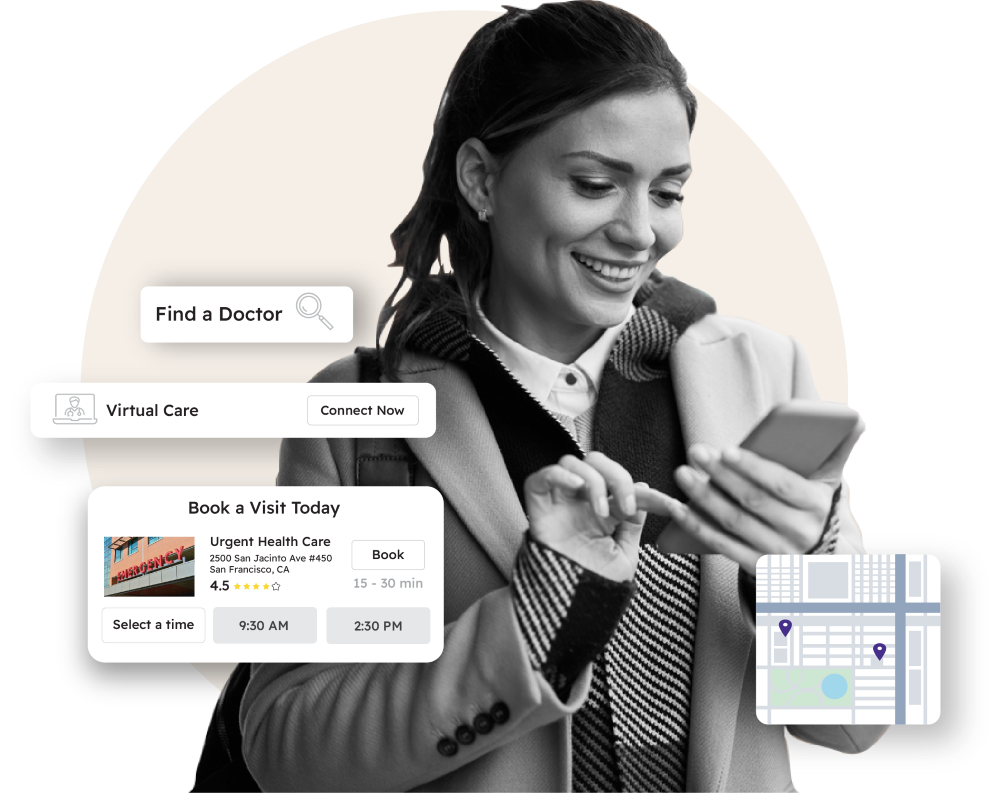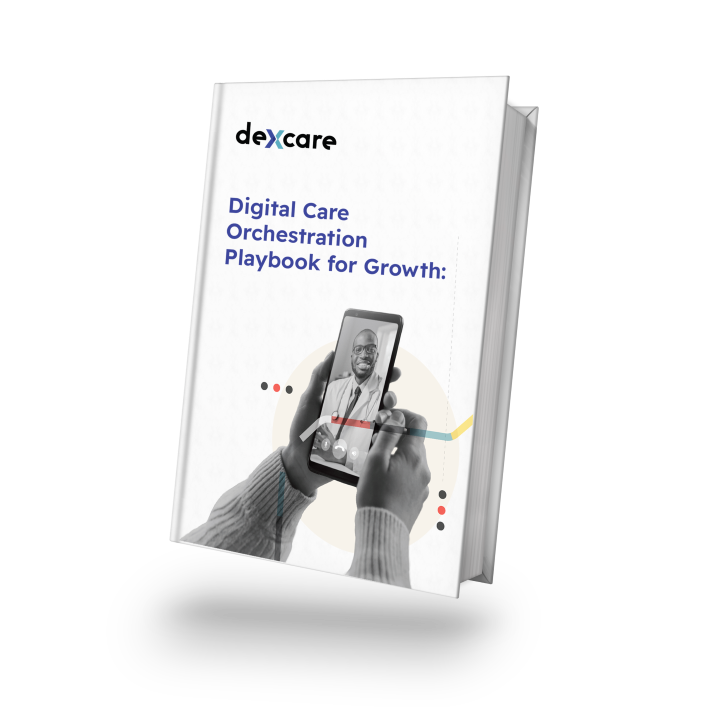Why Healthcare Should Optimize Onsite Search

The digital transformation trend continues to roll across healthcare. And the most effective strategies are found in the best practices of industries and disciplines that have toiled in the digital trenches for years. One example is the value in providing a modern, and effective onsite search experience.
“Customers want to solve their own problems,” said Madison Miner, DexCare’s chief of user growth. “As visitors enter your website, they must immediately filter through a bevy of services and care modalities to find what they’re looking for. And intelligent search is the most effective way to offer customers the control to quickly pinpoint the right care, all in a frictionless manner.”
People are conditioned to expect an intuitive, plain-view search interface to surface relevant results to solve issues, from researching a provider, booking an appointment to finding the nearest flu-shot location. But these seemingly simple functions — matching relevant results based on customer queries — are missing from the digital front door.
In healthcare, too often, search is buried, hard to find and is purposely designed to be rigid. Yes, healthcare is complex, but the technology and algorithms that power search offer the granularity and relevancy that enables decision making.
After decades of Google – and its seemingly simple ability to digest and present data – customers encounter search on nearly every website, across almost every industry. From retail to real estate, websites use prominent search features to capture and convert. But on healthcare websites, search is hidden in the navigation and lacks the power to interpret natural language into actionable options.
Healthcare customers expect familiar features like:
- A single place to find results — across providers, locations, services and modalities
- The use of natural language to narrow down options
- Location-based results with real-time booking options
- And the ability to use filters to further narrow results
Done well, search appears effortless. And done poorly, search leads to frustration.
More than just a pretty UX
Providing a great user experience is the obvious benefit of an optimized onsite search feature, but the benefits reach beyond the end user. As Miner says, “Customers are direct, and lack hesitation when entering a search query, offering health systems the most powerful resource to reduce friction, while offering care.”
What people are searching for, and the language they use, highlight what visitors are most interested in and the problems they are trying to solve. And, importantly, search terms provide the user’s intent. Modern search can interpret these insights to route the most meaningful care option, while managing and synchronizing inventory.
Improve search, improve conversions
An improved search experience is better for customers and the network.
DexCare’s solution features a single-search interface that deciphers user intent and instantly directs the right level of care. It allows users to search for anything — be it providers, conditions, and locations — and receive relevant results from one place. For example, when someone searches for a doctor, they find doctor profiles, sorted by availability. A medical condition search surfaces providers sorted by the correct specialty. And queries can surface same-day care, pointing customers to nearby locations and clinics.
The interface is modular, providing both a site-wide search experience, or applied to enhance provider or location directories. In fact, healthcare networks using OmniSearch measure a 40% increase to provider bookings — a result of matching intent to availability, and streamlining the digital journey.
Customers want to solve their own problems. And to keep up with ever-changing digital expectations, healthcare websites can’t afford to rely on low-grade search capabilities. A modern approach to search is available, and should be part of any digital transformation strategy.






